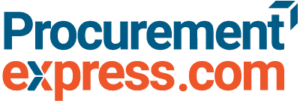As a best-in-class virtual CFO, you know you aren’t just a bean counter. Instead, you are responsible for driving financial strategy, optimizing cash flow, and helping businesses make smarter financial decisions. But to do that effectively, you need the right tech stack to streamline processes, automate tedious tasks, and provide real-time financial insights.
With so many financial tools on the market, choosing the right ones can be overwhelming. Some focus on cloud accounting and bookkeeping, while others specialize in forecasting, budgeting, purchasing, and compliance. The best virtual CFOs combine multiple tools to create a system that reduces manual work and improves financial visibility.
In this guide, we’ll break down the must-have virtual CFO tools, covering everything from accounting and cash flow management to procurement and expense tracking.
What are virtual CFO tools?
vCFOs need the right technology stack to streamline accounting, forecasting, reporting, and collaboration.
That’s where a virtual CFO tool stack comes in handy.
Virtual CFO tools range from cloud-based accounting platforms to cash flow forecasting, budgeting, and spend management software. The best tools automate tedious tasks, improve visibility, and help vCFOs provide real-time financial insights. So, you can focus on strategy, not manual number-crunching.
How to build your ultimate virtual CFO tool kit
Every virtual CFO operates differently, but the best ones leverage tech to work smarter, not harder. Here are the essential tools every vCFO should consider.
Cloud accounting software
A virtual CFO’s foundation starts with a reliable cloud-based accounting system. These platforms handle everything from bookkeeping to financial reporting.
Here are three of the best options:
- QuickBooks Online – The industry standard for SMBs, as it offers automated bookkeeping, invoicing, and built-in financial reports.
- Xero – A user-friendly alternative with strong automation features, built-in bank reconciliation, and easy multi-currency support.
- FreshBooks – Best for freelancers and service-based businesses that need simple invoicing and expense tracking.
Financial planning and analysis tools
As a vCFO, you also need to analyze trends, model financial scenarios, run detailed cash flow forecasts, and guide decision-making. That’s where FP&A tools come in.
Here are three of the best options:
- Jirav – A powerful tool for financial modeling, scenario planning, and cash flow forecasting.
- Fathom – Combines financial analysis, reporting, and visualization to help vCFOs present data-driven insights.
- Cube – A flexible FP&A platform that integrates with spreadsheets and accounting software for real-time reporting.
Purchasing tools
Keeping a company’s finances healthy isn’t just about tracking revenue. It’s also about controlling expenses before they happen. That’s why vCFOs need a spend management solution to streamline purchasing, prevent maverick spending, and maintain real-time budget visibility.
Here are three of the best options:
- ProcurementExpress.com – A purchasing automation all-in-one app that gives vCFOs total control over company spending with budget tracking, purchase approvals, and spend reporting before expenses hit the books.
- Ramp – A virtual employee corporate card platform that helps businesses track spending in real-time.
- Expensify – An expense management platform that makes it easy to keep track of receipts, submit expense reports, and reimburse employees in one system.
Cash flow management and forecasting tools
Free cash flow is arguably the most important metric for a business, and vCFOs need tools that provide real-time visibility into cash movements while forecasting future needs.
- Float – A real-time cash flow forecasting tool that syncs with QuickBooks, Xero, and other cloud-based accounting platforms.
- Pulse – A simple yet powerful tool for tracking cash flow and financial projections.
- Dryrun – A scenario-based cash flow modeling tool that helps businesses plan for different financial outcomes.
Inventory management and forecasting tools
For businesses that rely on inventory, vCFOs need tools to track stock levels, forecast demand, and optimize purchasing decisions.
- Cin7 Core – A cloud-based inventory and order management platform with real-time tracking.
- Netstock – Helps businesses optimize inventory levels and improve cash flow.
- QuickBooks Commerce – A robust inventory and supply chain management tool for growing businesses that are already in the QuickBooks ecosystem.
Tax and compliance tools
Staying compliant and making tax time a little easier is a big job.
- Avalara – Automates sales tax calculations and filing.
- TaxJar – A go-to tax compliance tool for eCommerce businesses.
- Shoeboxed – Digitizes and organizes receipts for easy expense tracking and audit readiness.
Collaboration tools for working with remote teams
Most vCFOs work remotely, so it makes sense that you need tools to communicate, share reports, and collaborate with clients seamlessly.
- Slack – The standard for team communication
- Google Workspace – Cloud-based document sharing, spreadsheets, and collaboration tools.
- Notion – A flexible workspace for project management and even financial documentation.
Best practices for choosing the right virtual CFO tools
Instead of piecing together software at random, focus on tools that work together, streamline processes, and give you real-time visibility.
Here are some best practices to follow:
- Prioritize automation. The more you can automate, the less time you’ll spend on manual tasks.
- Look for deep integrations. Choose tools that sync seamlessly with your accounting and reporting systems.
- Consider scalability. Your tech stack should grow with your client base, not hold you back.
- Think beyond accounting. vCFOs who manage budgets, cash flow, and procurement need tools that go beyond standard bookkeeping software.
- Test before you commit. Many tools offer free trials—take advantage of them to find the best fit.
Key takeaways
With the right tools, you can deliver more value, work more efficiently, and provide real-time financial insights that drive smarter business decisions.
Choosing the right tools means less time on manual work and more time on strategic finance decisions.
Want better visibility and control over company spending? Start your free trial of ProcurementExpress today.



